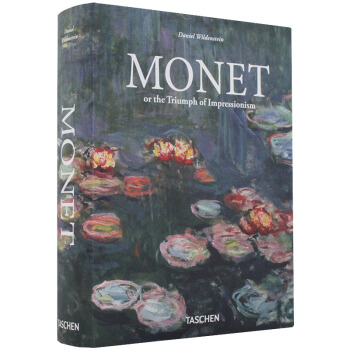![The Sense of Style The Thinking Person's Guide 英文原版 [平装]](https://pic.windowsfront.com/19575189/56eb56a4N24113377.jpg)

具体描述
内容简介
“Charming and erudite . . . The wit and insight and clarity he brings . . . is what makes this book such a gem.” —Time.com?
Why is so much writing so bad, and how can we make it better? Is the English language being corrupted by texting and social media? Do the kids today even care about good writing—and why should we care?
In this entertaining and eminently practical book, the cognitive scientist, dictionary consultant, and New York Times–bestselling author Steven Pinker rethinks the usage guide for the twenty-first century. Using examples of great and gruesome modern prose while avoiding the scolding tone and Spartan tastes of the classic manuals, he shows how the art of writing can be a form of pleasurable mastery and a fascinating intellectual topic in its own right. The Sense of Style is for writers of all kinds, and for readers who are interested in letters and literature and are curious about the ways in which the sciences of mind can illuminate how language works at its best.
作者简介
Steven Pinker is the Johnstone Professor of Psychology at Harvard University. He has been listed among Foreign Policy magazine’s “Top 100 Public Intellectuals” and Time’s “The 100 Most Influential People in the World.” He is currently chair of the Usage Panel of The American Heritage Dictionary.,,精彩书评
Praise for The Sense of Style?“[The Sense of Style] is more contemporary and comprehensive than “The Elements of Style,” illustrated with comic strips and cartoons and lots of examples of comically bad writing. [Pinker’s] voice is calm, reasonable, benign, and you can easily see why he’s one of Harvard’s most popular lecturers.”
—The New York Times
?
“Pinker's linguistical learning…is considerable. His knowledge of grammar is extensive and runs deep. He also takes a scarcely hidden delight in exploding tradition. He describes his own temperament as "both logical and rebellious." Few things give him more pleasure than popping the buttons off what he takes to be stuffed shirts.”
—The Wall Street Journal
?
“[W]hile?The Sense of Style?is very much a practical guide to clear and compelling writing, it’s also far more…. In the end, Pinker’s formula for good writing is pretty basic: write clearly, try to follow the rules most of the time—but only the when they make sense. It’s neither rocket science nor brain surgery. But the wit and insight and clarity he brings to that simple formula is what makes this book such a gem.”
—Time.com
?
“Erudite and witty… With its wealth of helpful information and its accessible approach, The Sense of Style is a worthy addition to even the most overburdened shelf of style manuals.”
—Shelf Awareness
?
“Forget Strunk and White’s rules—cognitive science is a surer basis for clear and cogent writing, according to this iconoclastic guide from bestselling Harvard psycholinguist Pinker... Every writer can profit from—and every writer can enjoy—Pinker’s analysis of the ways in which skillfully chosen words engage the mind.”
—Publishers Weekly (starred)
?
“Yet another how-to book on writing? Indeed, but this is one of the best to come along in many years, a model of intelligent signposting and syntactical comportment…Pinker's vade mecum is a worthy addition to any writer’s library.”
—Kirkus Reviews
?
“In this witty and practical book on the art of writing, Pinker applies insights from the sciences of language and mind to the crafting of clear, elegant prose: #requiredreading.”
—Publishers Weekly, PW pick Fall 2014 Announcements
?
“Who better than a best-selling linguist and cognitive scientist to craft a style guide showing us how to use language more effectively?”
—Library Journal
?
“[A] dense, fascinating analysis of the many ways communication can be stymied by word choice, placement, stress, and the like. [Pinker’s] explanations run rich and deep, complemented by lists, cartoons, charts on diagramming sentences, and more.”
—Booklist
?
“This book is a graceful and clear smackdown to the notion that English is going to the proverbial dogs. Pinker has written the Strunk & White for a new century while continuing to discourage baseless notions such as that the old slogan should have been ‘Winston tastes good AS a cigarette should.’”
—John McWhorter, author of Our Magnificent Bastard Tongue and The Power of Babel
?
“Great stuff! Only Steven Pinker could have written this marvelous book, and thank heaven he has. ‘Good writing can flip the way the world is perceived,’ he writes, and The Sense of Style will flip the way you think about good writing. Pinker’s curiosity and delight illuminate every page, and when he says style can make the world a better place, we believe him.”
?—Patricia T. O’Conner, author of Woe Is I and, with Stewart Kellerman, Origins of the Specious
?
前言/序言
用户评价
当我看到《The Sense of Style: The Thinking Person's Guide》这个书名时,我的脑海里立刻勾勒出一个画面:一位博学多识的智者,坐在书桌前,周围堆满了经典著作,他正以一种平静而深入的语气,与你探讨语言的奥秘。我期待它提供给我的,不是那些空洞的理论,而是充满智慧的洞见。我希望它能够教会我如何去“看见”文字的细微之处,如何去“感受”词语的重量和温度,如何去“运用”句子来构建思想的大厦。这种“thinking person's guide”的定位,让我觉得它不是为了速成而存在,而是为了提升。它或许会挑战我固有的写作习惯,但正是这种挑战,才能带来真正的成长。我希望能在这本书中找到一种新的视角,让我重新审视我的每一个字,我的每一个句,让我的文字不仅仅是信息的传递,更是思想的载体,是情感的流淌。
评分《The Sense of Style: The Thinking Person's Guide》这个书名,给我一种既权威又亲切的感觉。我期待它能在写作这个领域,给予我一种“拨乱反正”的力量。市面上充斥着各种“写作文案”、“营销写作”之类的书籍,它们往往过于功利化,忽略了文字本身的美感和思想的深度。而“thinking person's guide”,则暗示着一种回归本质的探索,一种对语言的纯粹追求。我希望这本书能帮助我摆脱那些套路和模式,找到一种更自由、更本真的表达方式。它或许不会给我立竿见影的效果,但它会像一位优秀的导师,在我心中播下思考的种子,让我学会如何独立地去判断,去选择,去创造。我期待的是,通过阅读这本书,我能够提升自己的审美能力,培养更敏锐的语感,最终让我的写作,能够经受住时间的考验,并且真正地打动人心。
评分这本书的名字就吸引了我,《The Sense of Style: The Thinking Person's Guide》,光是这个名字,就让人觉得它不像市面上那些泛泛而谈的写作指南。我一直觉得,好的写作,不仅仅是技巧的堆砌,更深层的是一种思考,一种对语言的敏感和对世界的理解。《The Sense of Style》似乎正是想要触及这个核心。我脑海中浮现出的,是作者以一种非常温和但又充满力量的方式,引导我深入思考“什么是好的风格”,以及如何在我的文字中体现这种“好的风格”。我期待的是,它不会给我一堆僵化的规则,而是提供一种更灵活、更具启发性的框架,让我能够根据自己的语境和目的,去创造属于自己的独特声音。这种“思考的人的指南”的定位,让我觉得它更像是一位睿智的朋友,在我写作的迷茫时刻,给我指点迷津,让我看到文字背后更广阔的可能性,而不是一个冷冰冰的“老师”。我希望它能帮助我摆脱那些陈词滥调,找到更精准、更有力、更能打动人心的表达方式。
评分我被《The Sense of Style: The Thinking Person's Guide》这个书名深深吸引了。它承诺的不仅仅是写作技巧,更重要的是“思考”的力量。在这个信息爆炸的时代,我们每天都在阅读和写作,但很多时候,我们的表达是模糊不清的,我们的理解是浅尝辄止的。我希望这本书能够引导我深入地思考,如何让我的文字更有力量,更有逻辑,更有深度。它不像那些“快速致富”式的指南,而是鼓励你去沉下心来,去琢磨,去体会。我猜想,它会像一位经验丰富的侦探,帮助我解开语言的秘密,找到最适合表达思想的方式。我期待它能让我学会如何辨别那些含糊不清的表达,如何构建清晰有力的论证,如何用文字去描绘复杂的情感。这本书,在我看来,是一种对写作的智慧启迪,它会让我不仅仅是一个写作者,更是一个思想的传播者。
评分我迫不及待地想翻开这本《The Sense of Style: The Thinking Person's Guide》。我猜想,这本书的核心在于“思考”。很多写作指导书,充其量只是教你一些表面上的技巧,比如如何写出吸引人的开头,如何使用更生动的词汇。但真正的问题在于,为什么这样做?背后的逻辑是什么?《The Sense of Style》似乎想从根本上解决这个问题,它不是告诉你“怎么做”,而是让你明白“为什么这样做”,并且让你自己去思考,在不同的情境下,应该选择哪种“为什么”。我设想,它会像一位经验丰富的匠人,不仅仅教你如何打磨工具,更重要的是让你理解材料的特性,以及你想要创作的作品的最终形态。这种对“思考”的强调,让我觉得它不是一本快餐式的读物,而是一本值得反复品味、随时翻阅的案头书。我期待它能让我从一个被动接受者,变成一个主动的创造者,让我的写作不再是机械的模仿,而是充满生命力的表达。
评分经典好书,对英文写作很有启发。
评分书挺小的一本,挺轻的
评分帮朋友买的。。。。。。。。。。。。
评分发了本旧的,没有塑封,上面也有灰,边边也是脏的,很不开心很不满意
评分质量不是很好,若不是急需,真不能忍
评分发了本旧的,没有塑封,上面也有灰,边边也是脏的,很不开心很不满意
评分包装太简陋,只有书上边儿裹了一层包装纸,送来打开书边角的褶皱都看不过眼。
评分经典好书,对英文写作很有启发。
评分很好很有修养。~!
相关图书
本站所有内容均为互联网搜索引擎提供的公开搜索信息,本站不存储任何数据与内容,任何内容与数据均与本站无关,如有需要请联系相关搜索引擎包括但不限于百度,google,bing,sogou 等
© 2025 book.coffeedeals.club All Rights Reserved. 静流书站 版权所有


![The Worst Helper Ever![最糟糕的帮手] [平装] [4-6岁] pdf epub mobi 电子书 下载](https://pic.windowsfront.com/19031533/5c0d8705-41a2-4230-8d5f-33b6f19c310e.jpg)
![Nate the Great and Me: The Case of the Fleeing Fang 英文原版 [平装] [6岁及以上] pdf epub mobi 电子书 下载](https://pic.windowsfront.com/19035895/597b2372-b69f-4f8a-9eee-5472015912b9.jpg)
![The Lean Startup精益创业 英文原版 [精装] pdf epub mobi 电子书 下载](https://pic.windowsfront.com/19041491/rBEQYVGUU1cIAAAAAACWVhIFVJUAABR0gJOcMgAAJZu125.jpg)
![Matilda 玛蒂尔达 英文原版 [平装] [8岁及以上] pdf epub mobi 电子书 下载](https://pic.windowsfront.com/19140154/86fb72e0-c053-4d4f-9f13-1c49c5ee58e0.jpg)



![The Littlest Leaguer (I Can Read, Level 1)小小盟员 [平装] [4-8岁] pdf epub mobi 电子书 下载](https://pic.windowsfront.com/19003917/7da4bd79-64cb-4eff-a62c-9e54c5636c53.jpg)
![Nine Stories 九个故事 英文原版 [平装] pdf epub mobi 电子书 下载](https://pic.windowsfront.com/19030802/rBEhVVKmobcIAAAAAABEjKf2uxEAAGs1gJQEBsAAESk255.jpg)
![No Nap 没午休 英文原版 [平装] [2岁及以上] pdf epub mobi 电子书 下载](https://pic.windowsfront.com/19235792/rBEGFk-jb9AIAAAAAAB0dFuiH3cAAAvBABgANQAAHSM511.jpg)
![Handa's Hen [平装] [3-7岁] pdf epub mobi 电子书 下载](https://pic.windowsfront.com/19290228/rBEhU1Jbh1cIAAAAAADQlQXBdzsAAEG_QPx2ScAANCt213.jpg)
![Alligators and Crocodiles 英文原版 [平装] [4-8岁] pdf epub mobi 电子书 下载](https://pic.windowsfront.com/19540068/554c928bNa7e27917.jpg)
![Doodle Dudes My Monster 英文原版 [平装] pdf epub mobi 电子书 下载](https://pic.windowsfront.com/19567240/575e4d22N882da9bf.jpg)
![How to Draw: Drawing and Sketching Objects and E 英文原版 [平装] pdf epub mobi 电子书 下载](https://pic.windowsfront.com/19646306/5783385eNf8b7be1a.jpg)




